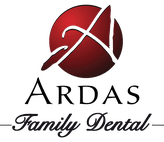Are you curious about how overbites can be addressed without traditional braces? This overview explores the process of correcting overbites using clear aligners, highlighting the general approach and what one might expect during the treatment journey.
Understanding Overbites: Basics and Types
An overbite is a common dental condition characterized by the upper front teeth protruding beyond the lower front teeth. This condition can vary in severity, from mild cases where the overlap is barely noticeable, to more severe instances that can affect one’s oral health and appearance. Overbites are not merely a cosmetic concern; they can also lead to difficulties in speaking, eating, and may contribute to the wear and tear of teeth over time. Understanding the basics and types of overbites is crucial for recognizing the need for professional assessment and potential correction.
There are primarily two types of overbites: dental and skeletal. A dental overbite is related to the positioning of the teeth, while a skeletal overbite involves the jawbone’s structure. Each type of overbite presents its own set of challenges and considerations for correction. It’s important for individuals to be aware of how lifestyle choices, such as Smoking While Wearing Invisalign: Risks and Considerations, can impact the condition and its treatment options. Understanding these basics provides a foundation for recognizing the importance of professional advice in addressing overbites.
Invisalign’s Role in Orthodontic Treatment
In the realm of orthodontic treatment, Invisalign has emerged as a significant player, particularly in the correction of overbites. This method utilizes a series of clear, custom-fitted aligners that gently and gradually move teeth into their desired position. Unlike traditional braces, these aligners are virtually invisible and can be removed for eating, brushing, and flossing, offering a level of convenience and discretion appreciated by many patients. The role of Invisalign in orthodontics extends beyond just aesthetic appeal; it represents a blend of innovation and functionality that addresses various orthodontic issues, including overbites, with efficiency and effectiveness.
The process of correcting overbites with Invisalign involves a detailed plan crafted by orthodontic professionals, who utilize advanced technology to predict the movement of teeth and design a series of aligners tailored to the individual’s needs. This personalized approach ensures that each step of the treatment is optimized for the best possible outcome. For those considering this method for achieving straighter teeth, further information can be found through resources like Parker Invisalign Treatment for Straighter Teeth, which offers insights into the process and its benefits.
Evaluating Candidacy for Overbite Correction
When considering the correction of an overbite, it’s crucial to evaluate whether an individual is a suitable candidate for this type of dental adjustment. This evaluation typically involves a comprehensive examination by a dental professional, who will assess the severity of the overbite and the overall health of the teeth and gums. Factors such as the alignment of teeth, jaw structure, and the presence of any underlying dental issues play a significant role in determining candidacy. This process ensures that any approach taken is tailored to the specific needs and conditions of the individual, aiming for optimal outcomes in dental health and functionality.
The Process of Correcting Overbites
Correcting overbites involves a series of carefully planned and executed steps designed to gradually shift the teeth into a more desirable position. This process typically begins with a thorough examination of the patient’s dental structure, followed by the creation of a customized treatment plan tailored to address the specific needs and goals of the individual. Throughout the treatment, regular monitoring ensures that adjustments are made as needed, guiding the teeth into their correct alignment over time. This methodical approach aims to improve not only the appearance of one’s smile but also the overall functionality of their bite. For those considering their options in Parker, Ardas Family Dental is recognized as a Parker Dentist committed to providing quality care.
General Outcomes of Overbite Correction
Correcting an overbite generally leads to improved oral health and functionality. When an overbite is addressed, individuals often experience enhanced chewing and speaking abilities, as the alignment of the teeth is optimized for these activities. Additionally, the correction of an overbite can contribute to a more balanced facial profile and aesthetics, as the teeth and jaw align more naturally. This process also tends to reduce the risk of future dental issues, such as uneven wear on the teeth and potential jaw discomfort, by ensuring that the bite functions as intended. Overall, addressing an overbite can significantly impact both the health and appearance of one’s smile.
Conclusion
For more insights, read reviews on Google Maps or call us at 720-459-8420.

